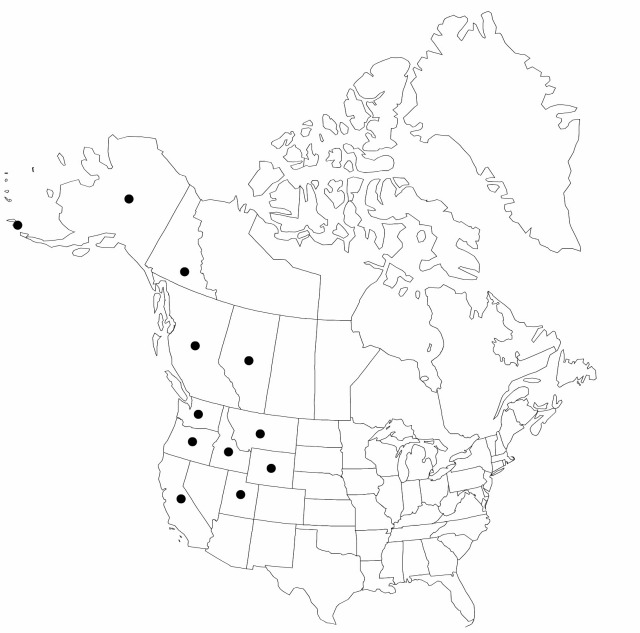Carex spectabilis
Amer. J. Sci. Arts 29: 248, plate X, fig. 76. 1836.
Culms 25–50 cm. Leaves basal and cauline; proximal leaves reduced to sheaths; distal leaves with blades 2–5 mm wide. Inflorescences: spikes separate, oblong or elongate, 8–20 × 3.5–5 mm; lateral spikes 2–4(–9); proximal spikes spreading or pendent, long-pedunculate; distal spikes approximate, erect or spreading, short-pedunculate. Pistillate scales brown or black, midvein prominent, lighter colored than body, conspicuous, lanceolate, shorter or longer than and as broad as perigynia, apex acute or mucronate. Perigynia yellow-green, green, or purple-black, veined or veinless, ovate, 3.5–5 × 1.75–2 mm, smooth; beak 0.4–0.5 mm, entire or deeply bidentate, smooth.
Phenology: Fruiting Jul–Sep.
Habitat: Moist subalpine and alpine meadows
Elevation: 300–3500 m
Distribution

Alta., B.C., Yukon, Alaska, Calif., Idaho, Mont., Oreg., Utah, Wash., Wyo.
Discussion
Some specimens of Carex spectabilis in Glacier County, Montana, show transitions to C. paysonis.
Selected References
None.
